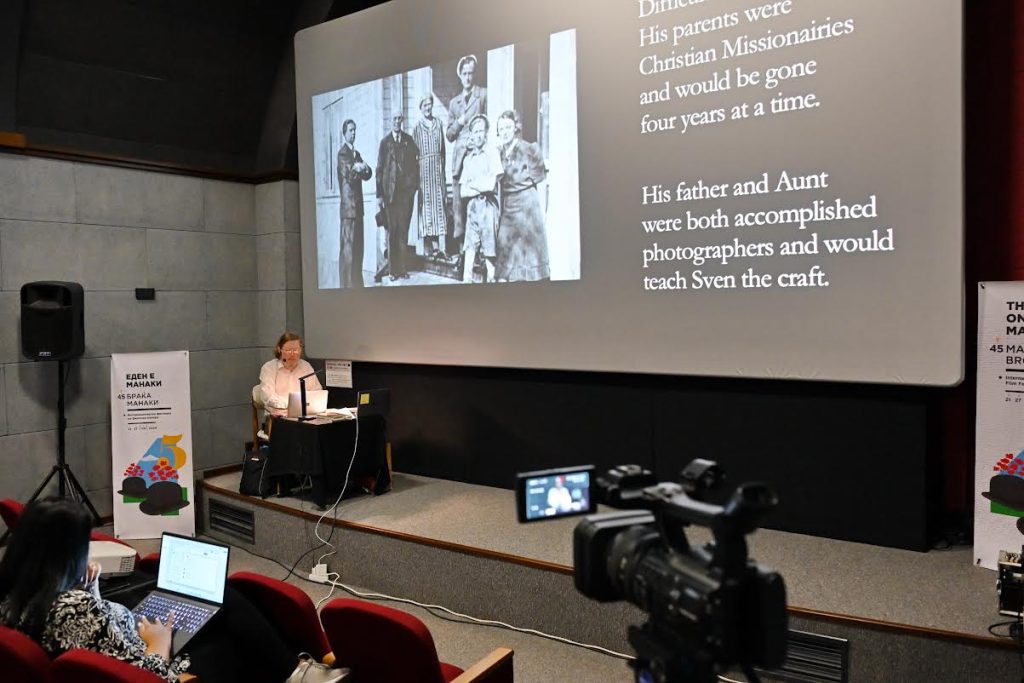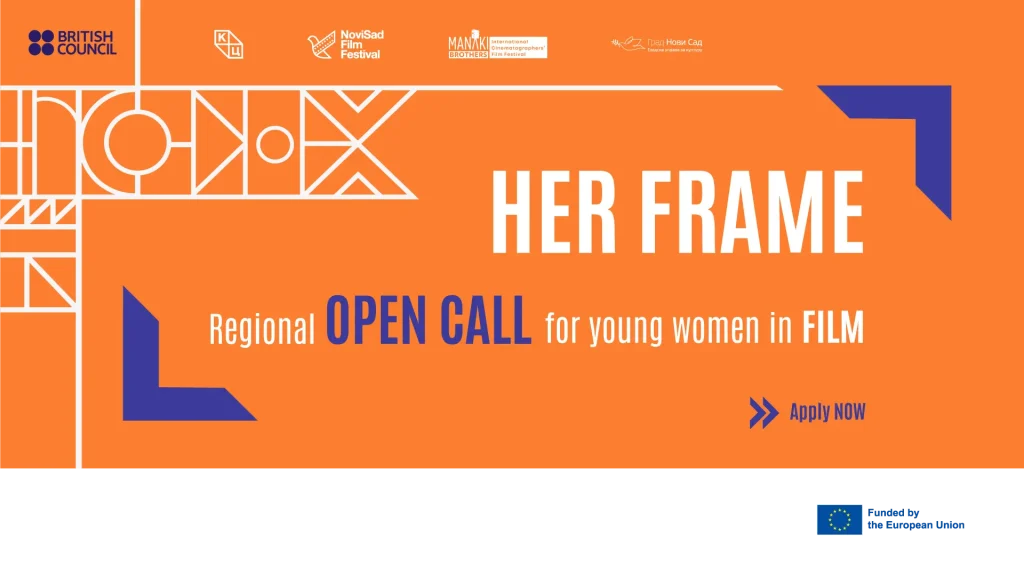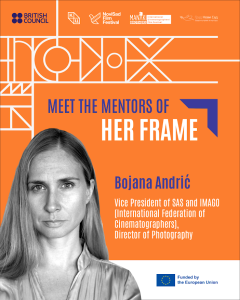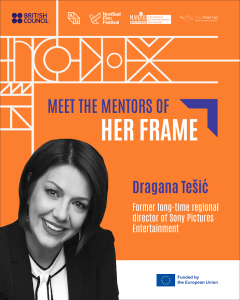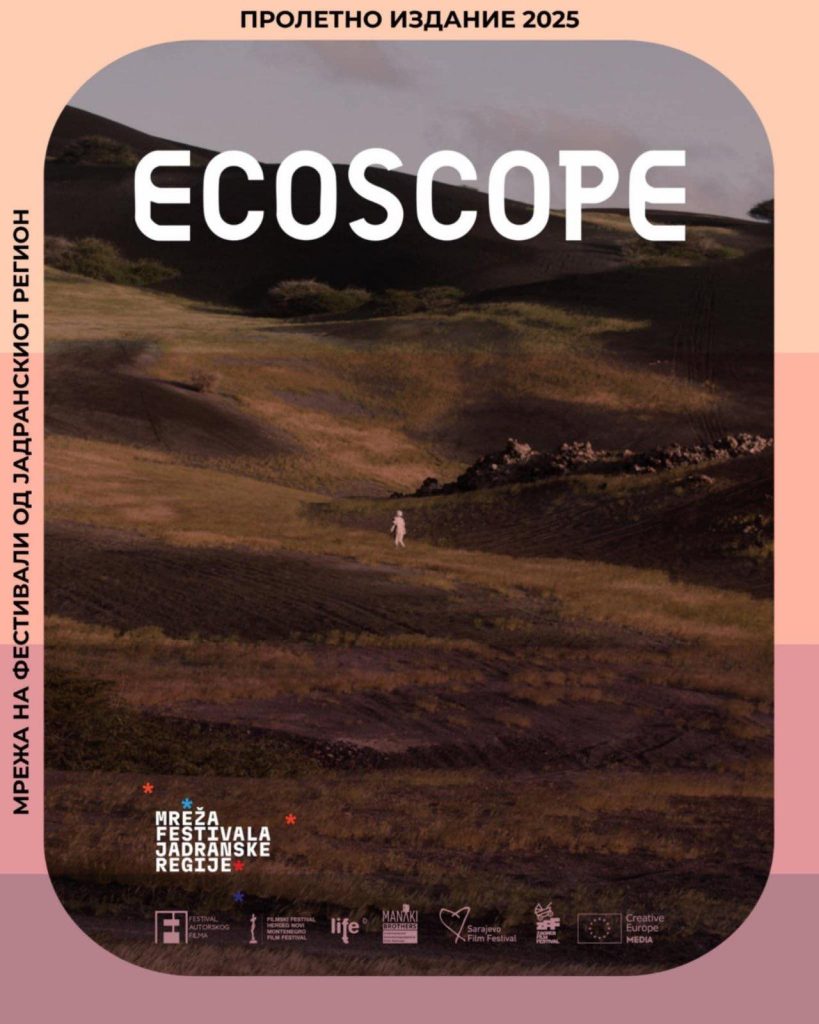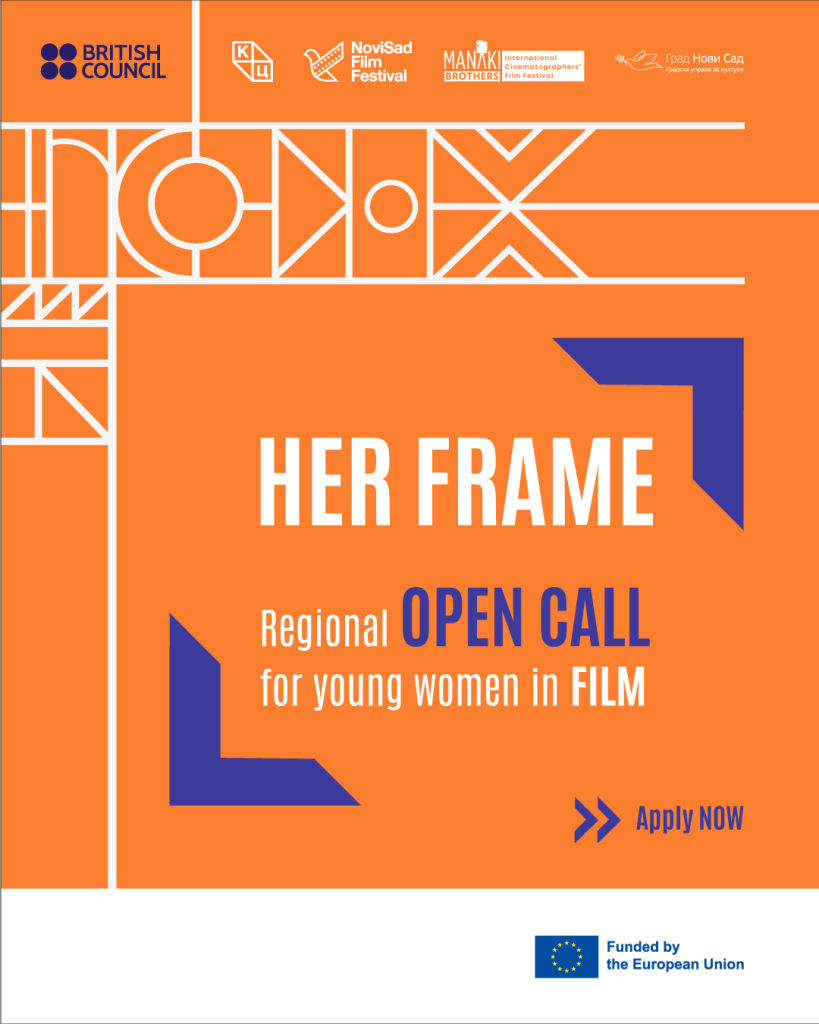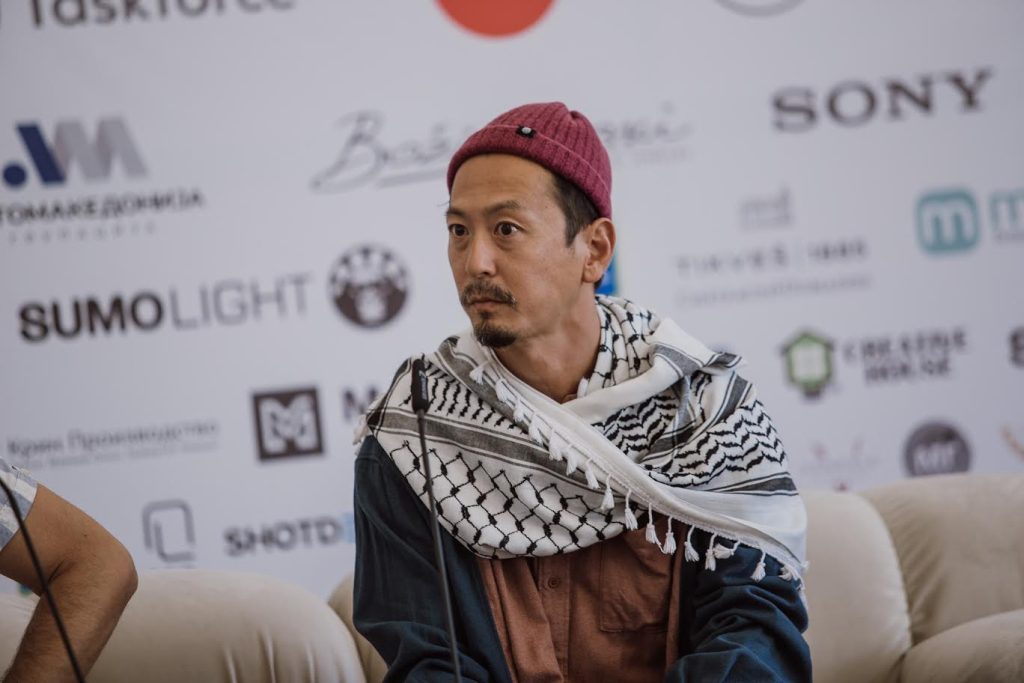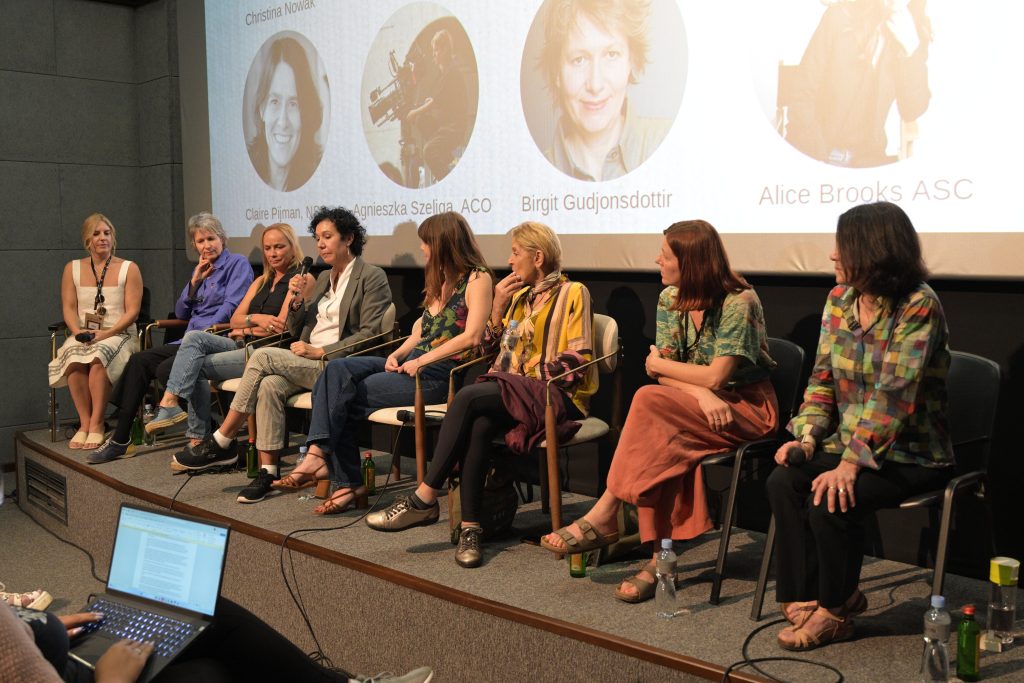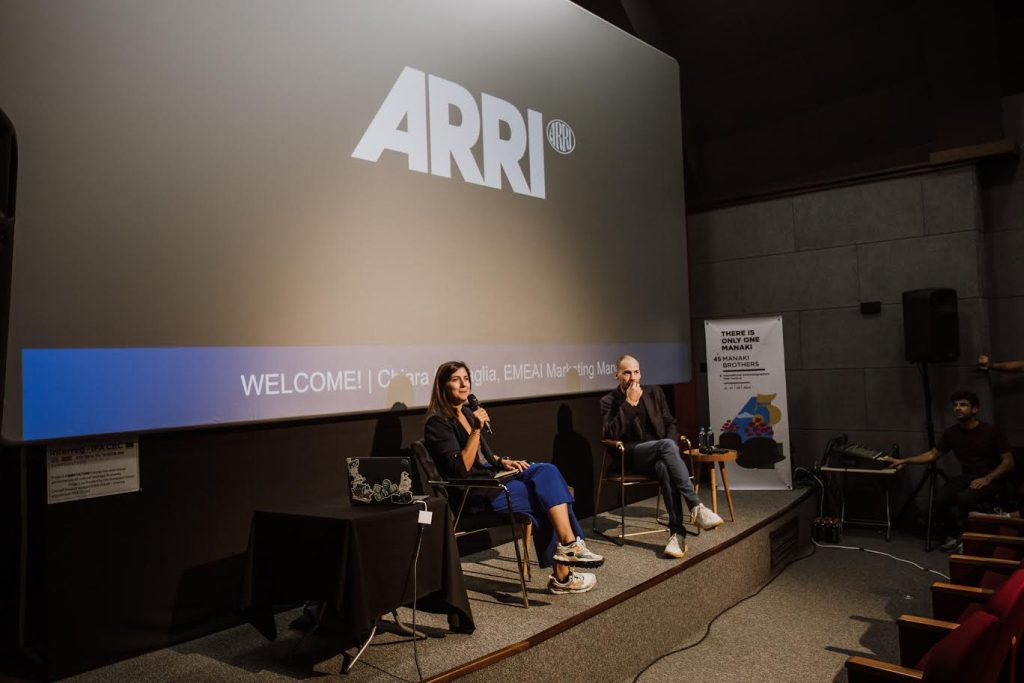With a screening of the film TerraForma, the Spring Edition of Ecoscope – Network of Festivals in the Adriatic Region – was held at the Cinematheque of Macedonia as a joint project of the leading regional film festivals (Sarajevo Film Festival, Belgrade Auteur Film Festival, Ljubljana International Film Festival, Zagreb Film Festival, Herceg-Novi Film Festival and ICFF “Manaki Brothers”).
– We did not choose the 22 nd of April for this screening by accident, we chose it because today is Earth Day and we wanted to commemorate the day accordingly, said the Director of the ICFF “Manaki Brothers”, Dimitrija Doksevski, who addressed
the audience before the screening and invited them to stay for the panel discussion held after the film with the environmental expert Hannes Jaeckl and the coordinator of the river protection program at “Eco-awareness” Gjorgji Mitrevski.
It was a full house at the Cinematheque and the audience had the chance to see “TerraForma” which tells the story of the remote volcanic island of Ascension, which had been mostly barren for millions of years until it was radically transformed into a tropical paradise through the process of “terraforming”. It is a story about what this transformation could mean for our planet in a future where human-engineered, terraformed landscapes could become commonplace, redefining our understanding of “nature” itself. There’s much more than meets the eye on this island… The new environment, seemingly a paradise, is actually a mirage – an image mirroring their ambition, their empire and their understanding of the world…
Filmmaking duo Kevin Brennan and Laurence Durkin are friends and long standing collaborators. Kevin is an artist and filmmaker from Ireland, while Laurence is a documentary filmmaker from London. In their work, they explore the themes of
identity, landscape, and the human relationships with the natural world.
The screening was followed by a panel discussion with Hannes Jaeckl and Gjorgji Mitrevski as guests.
Hannes Jaeckl is the CEO and co-founder of “Man and Mountain”, a Skopje-based company, which develops projects for environmental awareness – WEEKEND (CLEANING) MAKEOVER – SONCHEVA GORA, green cities, development of National
Parks and natural sites, green economy, organic agriculture, rural development – economic, cultural and social development, tourism, green energy…
– We started with 10 municipalities and 1,000 volunteers, but in five years “Weekend Makeover” has grown into a huge action that now involves 81 municipalities and 45,000 volunteers, said Hannes Jaeckl.
He emphasized that he believes that Macedonia can be free of litter by 2031, and that he was happy that this was not only his own wishful thinking, but a guiding though that all the participants in the cleaning actions shared. He said that the
following action was going to be organized to clean the Skopje Aqueduct on the 9 th May and urged the volunteers to join in large numbers.
“I believe it is our obligation to clean this country up, because this is the place where we live and it is full of talented, creative and kind people, so if we genuinely want to, we can solve all of our problems since this is quite a small country”, Jaeckl said.
He has heard the numerous stories of the people joining him in the cleaning actions, and he is under the impression that they no longer recognize their country.
-This is primarily because in the film we saw the reality that those people were trying to recreate, that they found to be fitting. Right now the people in Macedonia don’t recognize their own country. 20 years ago there wasn’t so much waste, there was no air pollution, but this process of terraforming does not only apply to the environment, it also applies to society. I believe that cinema and the art scene, including this project by the ICFF “Manaki Brothers” are extremely important, because art can have tremendous impact, which is the reason why I want us to do everything in our power to make Macedonia a country where we all want to live, said Jaeckl.
Gjorgji Mitrevski is the coordinator of the river protection program at Eco-awareness. As a producer, he engages in collaboration with independent cultural collectives and artists, creating films, theatre performances, exhibitions and installations in order to spread the environmental message and garner broader public support. In his work, he promotes the principles of citizen science and works on developing tools and methodologies that enable active citizen engagement in river monitoring. With this interdisciplinary approach, he brings science, art and community together in a joint commitment toward nature protection and wildlife conservation.
– I believe that the collaboration with artists and cultural centres is the best thing. It is related to tonight’s topic, but also to the film we just watched, simply because this is how we communicate the messages, the ideas we want to spread, said Mitrevski.
He pointed out that five years ago they decided to communicate directly with independent cultural centres, festivals, artists, etc. in order to raise awareness about nature and environment protection.
“Art, or culture in a broader sense is perhaps the most powerful medium to promote the ideas related to raising environmental awareness”, said Mitrevski, who as a producer actively collaborates with independent cultural collectives and artists, by making films, theatre plays, exhibitions and installations in order to spread the environmental message and garner broader public support.
He promotes the principles of citizen science in his work by developing tools and methodologies that enable active citizen engagement in river monitoring. Through this interdisciplinary approach, he brings science, art, and community together in a shared commitment towards nature protection and wildlife conservation.– What left the biggest impression on me while we were watching the film was one of the speakers who said that nature is a social construct and that we constantly reconstruct the notion of nature in public communications. That is to a large
extent true. For example, when we talk about rivers in Switzerland, more than 3,600 small hydroelectric power plants have been built there and there is not a single free-flowing river and not a single natural native system. In contrast,
several countries in the Balkans – Macedonia, Montenegro, Serbia, Bosnia and Herzegovina and part of Kosovo are the only places on the European continent which have rivers that are free-flowing from their source to their estuary, completely pristine…, said Mitrevski, pointing out that Macedonia is perhaps the last stronghold of pristine river ecosystems on the European continent and that preserving this status is what they are fighting for.
For those who were unable to attend the free screening at the Cinematheque, over the next week the film will be available online at the on-demand platform: https://ondemand.kinomeetingpoint.ba/.
